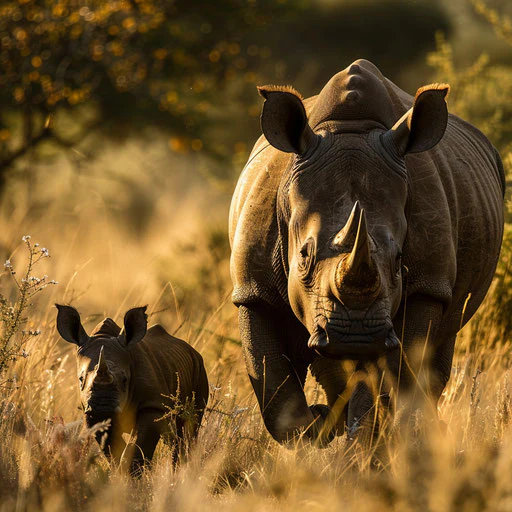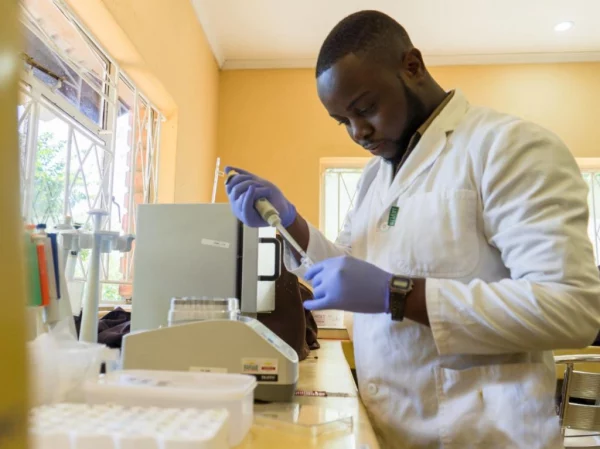Genetic technology is unlocking the door to the hope of reviving extinct species, and the black rhinoceros, a symbol of Africa’s wildlife, may be among them. With over 96% of the black rhino population wiped out by poaching between 1970 and 1992 (according to the World Wide Fund for Nature – WWF), this species has nearly vanished. Most rhino deaths have been driven by the high demand for rhino horn, believed to have medicinal properties in traditional medicine, particularly in countries like Vietnam, which is considered the largest consumer market.
The black rhino revival project, led by Dr. Chuck Murry and his research team at the University of Washington, is currently focused on decoding the DNA of the remaining individuals. Ntombi, one of the 5,000 surviving black rhinos, is the centerpiece of this initiative. “The goal is not only to preserve the remaining genes but also to recreate extinct subspecies and reintroduce them to their natural habitats,” Dr. Murry explained. This is an ambitious yet promising step toward protecting the wild ecosystem.
“If successful, genetic technology will not only save the rhino but also revolutionize the entire wildlife conservation strategy,” Dr. Murry affirmed.

Beyond reviving the species, the project also focuses on producing synthetic rhino horns to curb the demand for real ones. According to WWF, more than 1,200 rhinos are poached annually in South Africa – equivalent to one rhino killed every 8 hours. Synthetic horns could serve as a viable alternative, easing pressure on the remaining rhino populations and helping to dismantle the illegal market.
Moreover, the project’s success could drive the advancement of other cutting-edge conservation technologies. If the black rhino can be revived, the future might witness many other species returning from the brink of extinction. Genetic technology is not merely a tool but a gateway to restoring damaged ecosystems.
“We are not just saving a species but also restoring balance to nature, where every species plays a crucial role,” Dr. Murry emphasized.

This project is not only a triumph of science but also a call to action for the community. Supporting conservation initiatives and reducing the demand for wildlife products are the first steps individuals can take. When humanity acts for nature, we not only save endangered species but also secure our own future.


HPX24h > Science > Extinct Black Rhinos Could Make a Comeback with Genetic Technology
Top Reads from This Category
Science
The First Person to Experience Physical Sensations Through a Prosthetic Hand
Science
The Science of Measuring Biological Age: New Discoveries About the Aging Process
Science
The Secret of the Bee Brain: New Technology Enables Drones to Fly Independently
Science
Stem Cell Therapy for Lung Cancer: A New Hope Entering Human Trials
Science
NSF Job Cuts: Who Benefits and Who Bears the Consequences?
Science
Mind-Controlled Prosthetics: A Groundbreaking Advancement in Medicine
Science
Discovering Enzymes That Stimulate Hair Regrowth: A New Opportunity in Hair Loss Treatment
Discover New Topics
Science
Discovery of a New Stem Cell: A Major Advancement in Creating Human Organs
Healthy Eating
Health is ‘Declining’ Due to Processed Foods: How to Turn the Tide
Fitness
HIIT: The Ultimate Shortcut to Efficient and Comprehensive Fitness
Fitness
Aerobic and Anaerobic: The Right Training Secrets for Overall Health and Strength
Uncategorized
Bài Tiếng Việt
Parenting Tips
How Much Sleep Do Children Really Need?
Space
Exploring Gravitational Forces and the Evolution of the Universe
Parenting Tips
Teaching Children Respect: Simple Tips for Parents with Kids Aged 6 to 8
Science
AI Can Make Life Easier, But Is It Harming Your Ability to Think Critically?
Science
Can Pregnant Women Experience Temporary Memory Loss? The Secrets Behind Brain Changes During Pregnancy
Parenting Tips
Excessive Night Sweating in Children – A Normal Occurrence or a Cause for Concern?
Science
Why Do Adult Brains Continue to Generate New Neurons?
Animals
Explaining How Mosquitoes Can Fly Through a Rainstorm